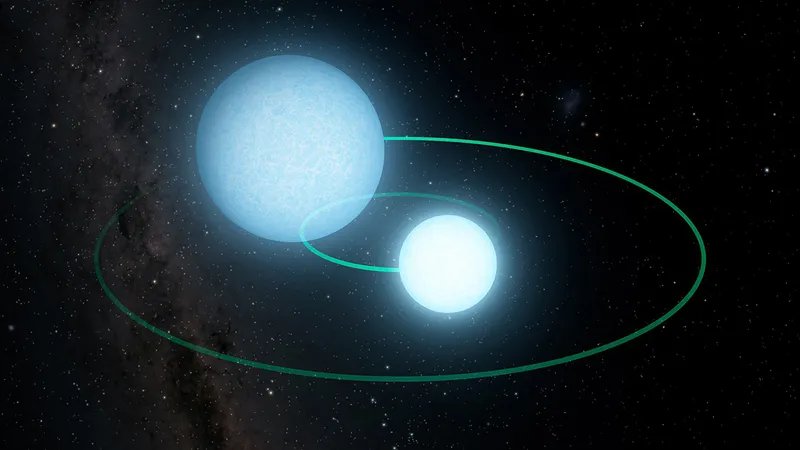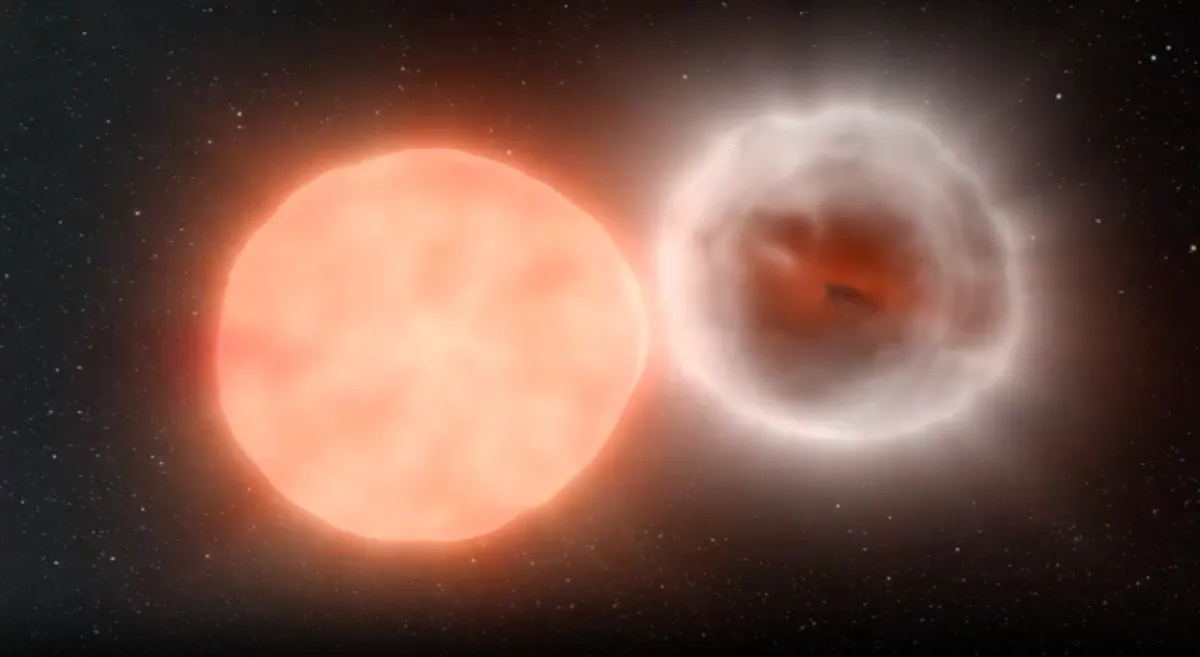Regular readers of this column will be in no doubt that I love a weird object.
Unusual versions of common astronomical objects are even better, presenting both a puzzle and a chance to learn more about astrophysics.
In the strange binary star discussed in this month’s paper, that’s exactly what we’re dealing with.
J0526+5934 is a binary star, with two objects that orbit each other in just over 20 minutes, a period that means they must be very close to each other indeed.
It was first spotted in data from ESA’s Gaia satellite, whose mapping of the Galaxy is now producing oodles of interesting objects.

But what is it?
Based on its colour and brightness, its discoverers thought the system must have a primary which is a sub-dwarf star, a little hotter and more massive than the Sun, orbited by a white dwarf.
The authors of one paper beg to differ, drawing on observations with the massive Grand Telescopio Canarias (GTC) in the Canaries, along with robotic telescopes elsewhere in Spain and Thailand which they used to monitor the brightness of the system over time.
Surprisingly small star
The new data allowed the team to measure how fast the objects are moving as they swing round each other.
Considering these measurements, plus a new spectrum of the object and the results of long-term monitoring, they can make the crucial determination of the mass of the brighter of the two stars – and it is not as massive as the discoverers thought.
In fact, at less than a third of the mass of the Sun, it’s not nearly massive enough to be a sub-dwarf.
Such stars don’t come in lightweight versions.
Instead, the authors suggest it must be an extremely low-mass white dwarf.
The second star is clearly a white dwarf, so this double is actually a pair of the dense stellar remnants in orbit around each other.

Tumultuous times ahead
Such systems are not entirely unknown, but this is only the fifth pair known in such a tight orbit.
This means these two stars have an exciting future ahead.
As they orbit each other, the fact that they’re moving fast means they make space ripple, emitting gravitational waves.
The resulting loss of energy will make them spiral together, colliding in something like three million years’ time, producing what seems likely to be an explosion known as a Type Ia supernova.
Type Ias are critical in modern cosmology, as those seen in distant galaxies allow us to measure the rate of expansion of the Universe.

The chance to study the progenitor of such a key tool in our journey to understanding our Universe will be invaluable.
We might soon see systems like J0526+5934 more directly.
ESA recently approved the construction of the LISA gravitational wave observatory.
While existing experiments like LIGO find ripples from massive objects like colliding black holes, LISA’s three spacecraft, flying in formation, will detect gravitational waves from systems just like this.
We’ll be hearing much more about double white dwarfs in the next few decades.
Chris Lintott was reading J0526+5934: A Peculiar Ultra-short Period Double White Dwarf by Alberto Rebassa-Mansergas et al. Read it online at: arxiv.org/abs/2402.04443.
This article appeared in the April 2024 issue of BBC Sky at Night Magazine.
